Iran’s street art shows defiance, resistance and resilience
Iranian artists are showing renewed determination to promote freedom as a cultural necessity in Iran, even in the face of a government crackdown.
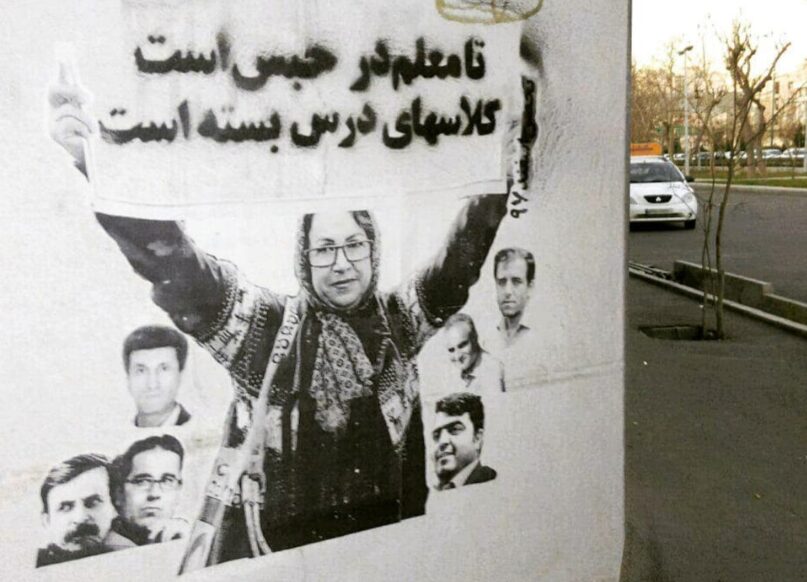
(The Conversation) — A recent rise in activism in Iran has added a new chapter to the country’s long-standing history of murals and other public art. But as the sentiments being expressed in those works have changed, the government’s view of them has shifted, too.
The ancient Persians, who lived in what is now Iran, adorned their palaces, temples and tombs with intricate wall paintings, showcasing scenes of royal court life, religious rituals and epic tales. Following the 1979 revolution and the Iran-Iraq war, murals in Iran took on a new significance and played a crucial role in shaping the national narrative. These murals became powerful visual representations of the ideals and values of the Islamic Republic. They were used to depict scenes of heroism, martyrdom and religious devotion, aiming to inspire national unity and pride among Iranians.
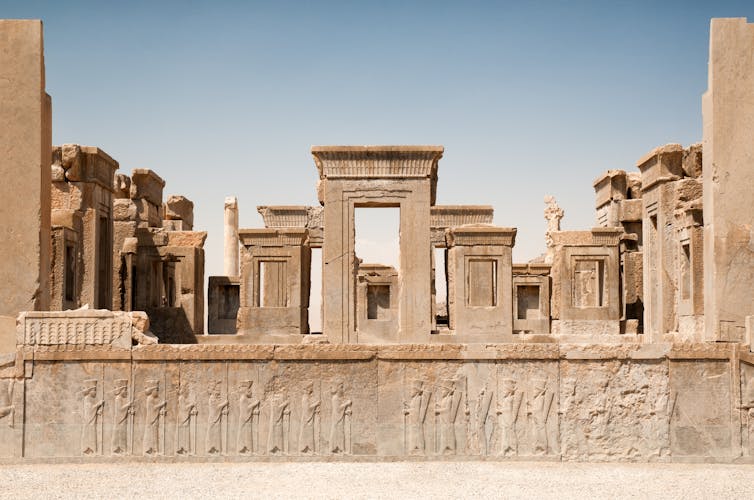
Persepolis, the ceremonial capital of the Achaemenid Empire in what is now Iran, was founded by Darius the Great in the sixth century B.C.E.
Laurens R. Krol, CC BY-SA
Over the centuries, these artworks came to adorn many public spaces, including the walls of mosques, universities and government buildings, becoming symbols of patriotism and religious devotion.
After the Islamic Revolution overthrew Shah Mohammad Reza Pahlavi in 1979, murals began to convey new political messages and ideological propaganda. They celebrated the ideals of the Islamic Revolution and showcased the leadership of Ayatollah Khomeini and other prominent figures of the revolution.
Murals frequently depicted anti-Western sentiments, condemning foreign interference and imperialism. They also highlighted the concept of martyrdom and the importance of defending the Islamic Republic against external threats, aiming to inspire national unity and pride among Iranians.
In 2022, the Iranian morality police arrested Mahsa (Jhina) Amini for allegedly failing to wear her hijab properly. After she died in police custody, public protests broke out across the country with the slogan “Woman, Life, Freedom” – and led to a new round of public art in Iran.
As a scholar of Iranian contemporary art, but more importantly as someone who studies the development of Iranian artists, I see their renewed determination to promote freedom as a cultural necessity in Iran, even in the face of a government crackdown.
Street art as protest
In the months following Amini’s death, artists, activists, and, most importantly, ordinary citizens poured into the streets to claim the public spaces and call for freedom.

Iranian street art shows a woman raising her arms, with fists clenched.
Khiaban Tribune via Instagram
Street art emerged as a powerful medium through which individuals could address a wide array of pressing social and political issues, including women’s rights, freedom of expression, political activism and the desire for a life free from the constraints of religious laws.
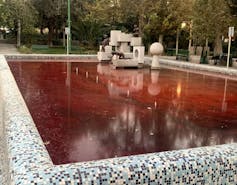
Fountains in Tehran were turned the color of blood in protest at the government crackdown on protests.
Khiaban Tribune via Instagram
Graffiti artists, in particular, played a vital role in expressing dissent and resistance. Throughout Iranian cities, evocative graffiti murals have appeared, telling stories of struggle, liberation and the indomitable spirit of the movement through the past 45 years since the 1979 revolution.
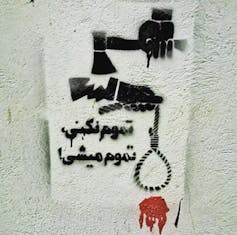
‘If you do not finish the job, you will be finished’ reads a piece of graffiti in Iran.
Khiaban Tribune via Instagram
Watching the progression of the Woman, Life, Freedom movement and the distribution of art created parallel to it, I noticed that artists turned public spaces into platforms for political messages, critiquing policies, advocating social change and promoting gender equality.
Sometimes even a dialogue emerged on the walls between the oppressed and the oppressor. Artists depicted pictures of the killed citizens, the activists detained, as well as iconic images of the revolution. The government erased or painted over the graffiti, but protesters came back with new images and messages.
Central to this movement is the participation of both professional artists and non-artist citizens, instigating change and fostering consciousness through powerful imagery created on the city walls. Ordinary people participate in changing the city’s visual landscape by expressing themselves through art.
The government responds
The rise of protest art in Iran has faced opposition from the government, which viewed these forms of expression as acts of defiance.

A street sign honoring someone who died in the Iran-Iraq war has that person’s name covered up and replaced with that of Mohsen Shekari, hanged in 2022 for participating in anti-government protests.
Khiaban Tribune via Instagram
Government suppression tactics in response to murals and expressions of dissent have been alarmingly severe. These tactics encompassed frequent physical removal of murals that challenged the status quo, aiming to silence the voices of those speaking out against injustice by detaining, kidnapping and threatening the lives of their creators. In addition to this visual erasure, authorities imprisoned artists and other demonstrators for their activism and imposed employment restrictions as punitive measures.
Despite governmental opposition and legal challenges, artists and activists persevered. They have used art to voice their concerns, challenge societal norms and advocate for change.
(Pouya Afshar, Associate Professor of Art & Design, UMass Lowell. The views expressed in this commentary do not necessarily reflect those of Religion News Service.)
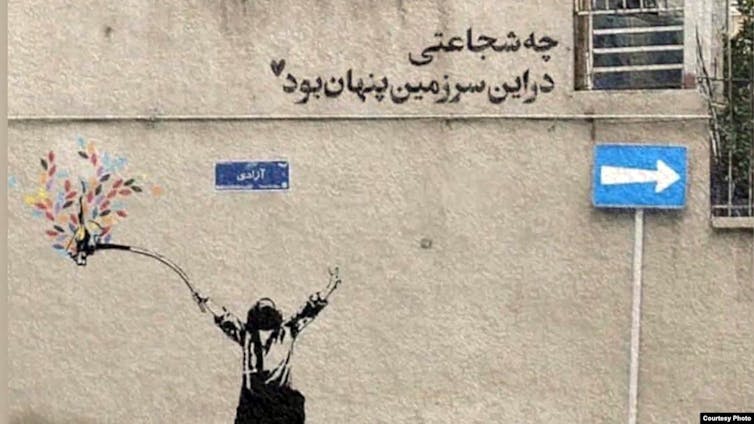
No comments:
Post a Comment